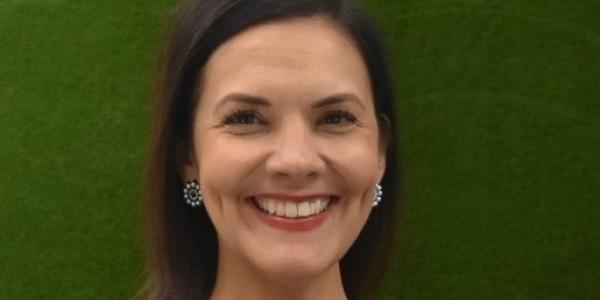From Our President: Broadening the Lens to Reach All Children

You are here
This Young Children issue’s cluster, “Advances in Understanding Child Development and Learning: Through a Lens of Equity,” is one that resonates with me personally. I was particularly moved by the article “Can I Help You? Supporting Equity, Learning, and Development by Allowing Children to Help Out,” as one of my goals as NAEYC Governing Board President is to build awareness of the strengths of Latino/a children and families.
In this article, the authors present research on Latino/a children and emphasize a strength they have observed that is not always valued in school settings—the desire to help out classmates and their teachers. As the authors describe:
As former bilingual early childhood educators and current early childhood education teacher educators and researchers, we have taught and collected data in dozens of classrooms serving Latine children from immigrant families. Our experience and the wider literature show that Latine immigrant communities often value and depend on children’s abilities to help out and contribute to their families and households. . . . However, schools that serve these communities rarely foster this value. . . . In this article, we discuss how early childhood educators can create classroom communities that allow children to help out, then show what this looks like in action. We end with suggestions for ways pre-K and primary-grade educators can encourage helping out in their own settings. (7)
Taking a strengths- or assets-based approach is crucial for many reasons. It could change the course of a child’s educational journey. It could have changed the course of my mother’s journey in school.
My mom is Mexican American, one of nine children in a loving family, but one where navigating the public education system was new to my grandparents. My mom didn’t go to college. She has always been fiercely smart and a voracious reader. The natural path I would have expected for a child like her would have been advanced classes, then college, then a career of her choice. But that path was denied to her, in part because of her race and her gender.
Taking a strengths-based approach is crucial for many reasons. It could change the course of a child’s educational journey.
The denial started early in her schooling. When my mother was a child, she took a standardized test along with every other fourth grader in her school district to measure aptitude and intelligence. My mom received the highest score of every single child who took the test that year. I remember how proud I was of her when she told me that story for the first time. What an accomplishment! But she went on to tell me that she didn’t even learn about her score until she was getting ready to graduate from high school. As she talked with her guidance counselor about graduation, he looked at her transcript, saw that piece of information, and asked why she had not been on the college preparation track. She didn’t have an answer because she never knew about her own potential, and she wondered if her parents even knew about her test score.
When she told me that story, it broke my heart. I was angry about it too. It made me realize that our systems are not set up so that children like my mom—poor children, Brown and Black children, girls—can achieve their full potential. In many ways, hearing my mom’s story was an impetus for much of the work I champion as an early childhood advocate.
I am also filled with hope that experiences like my mom’s are not as common today because educators are beginning to engage in thinking about how to see and support strengths in all children. Research is adding to the knowledge of the field.
The articles in this issue offer a wider perspective on child development. They introduce readers to theorists of diverse backgrounds and to research about diverse children to be considered within the whole of child development. They offer different ways of looking at child development knowledge and introduce a range of ideas that can expand our thinking. The ideas in this issue underscore the importance of Principle 6 in NAEYC’s position statement on developmentally appropriate practice:
Children’s motivation to learn is increased when their learning environment fosters their sense of belonging, purpose, and agency. Curricula and teaching methods build on each child’s assets by connecting their experiences in the school or learning environment to their home and community settings. (11)
My hope is that educators’ knowledge and perspectives broaden as they look at children who do not speak English as a first language, as they look at children of color, and as they look at children who are from economically disadvantaged backgrounds. My hope is that educators will look at all children from a strengths-based perspective and offer a child like my mother the opportunities she deserved.
Copyright © 2023 by the National Association for the Education of Young Children. See Permissions and Reprints online at NAEYC.org/resources/permissions.
Natalie Vega O'Neil is president of the National Association for the Education of Young Children.
